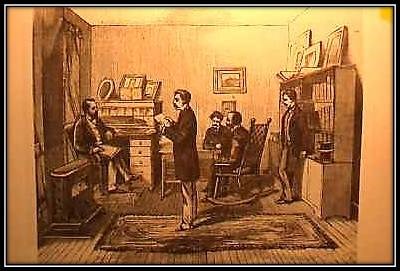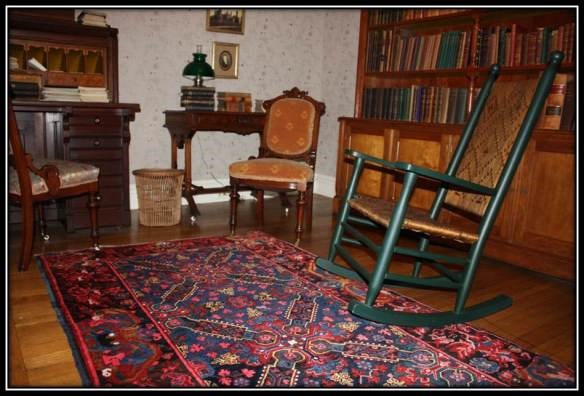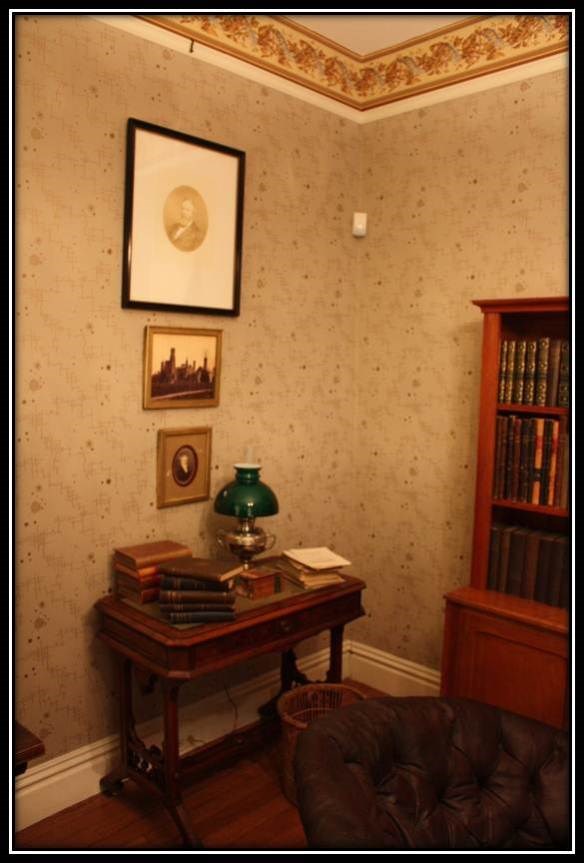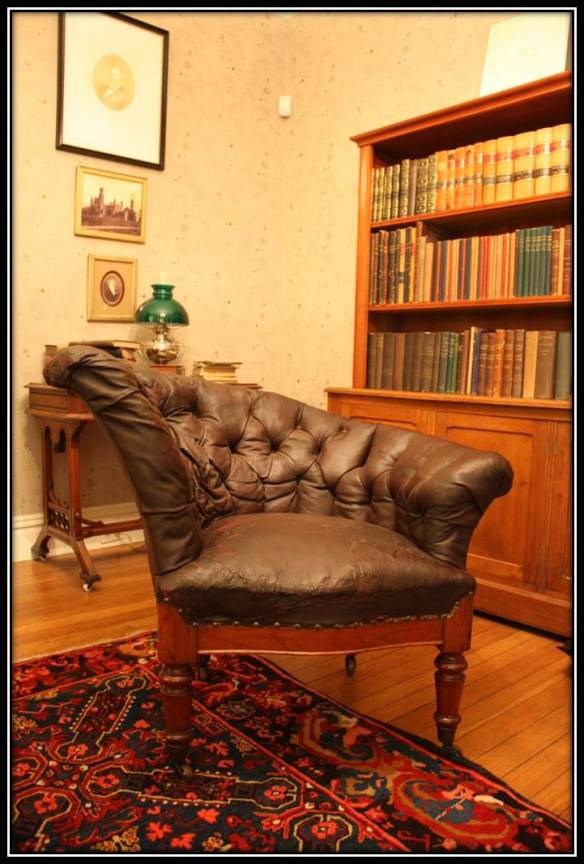Last updated: January 23, 2021
Article
A Snuggery for the General

Frank Leslie’s Illustrated Newspaper

Wikipedia.com

NPS photo

NPS Photo

NPS Photo
To the right of the General’s desk are pictures of James Smithson and the Smithsonian Castle. James Smithson was a British scientist and explorer who endowed “an establishment for the increase and diffusion of knowledge” for the United States. The Smithsonian Institution was established by an act of Congress in 1846. James Garfield served as a regent for the National Museum, as the Smithsonian was called, from 1865 to 1873 and again from 1878 to 1881. In addition to his duties as regent, Garfield enjoyed the museum with his family, regularly mentioning visits with his children. On March 4, 1881, Garfield’s inaugural ball was held in the new National Museum building that we today recognize as the Castle.

NPS photo
Above the fireplace is a framed group of twenty gentlemen, including James Garfield. The others are Mark Hopkins, president-emeritus, and eighteen members of the Williams College class of 1856. The pictures were taken in Washington in March, 1881. On March 5, 1881, the first full day of James Garfield’s presidency, he recorded in his diary, “The pleasant event of the day was the call of the Williams College Alumni, and the speech of Dr. Hopkins, to which I replied briefly.”

NPS Photo
The “snuggery for the General,” as Lucretia Garfield described it, is the room in James Garfield’s Mentor home that most reflects his personality and his interests. We can all imagine him feeling comfortably at home here.
Written by Joan Kapsch, Park Guide, James A. Garfield National Historic Site, October 2014 for the Garfield Observer.
